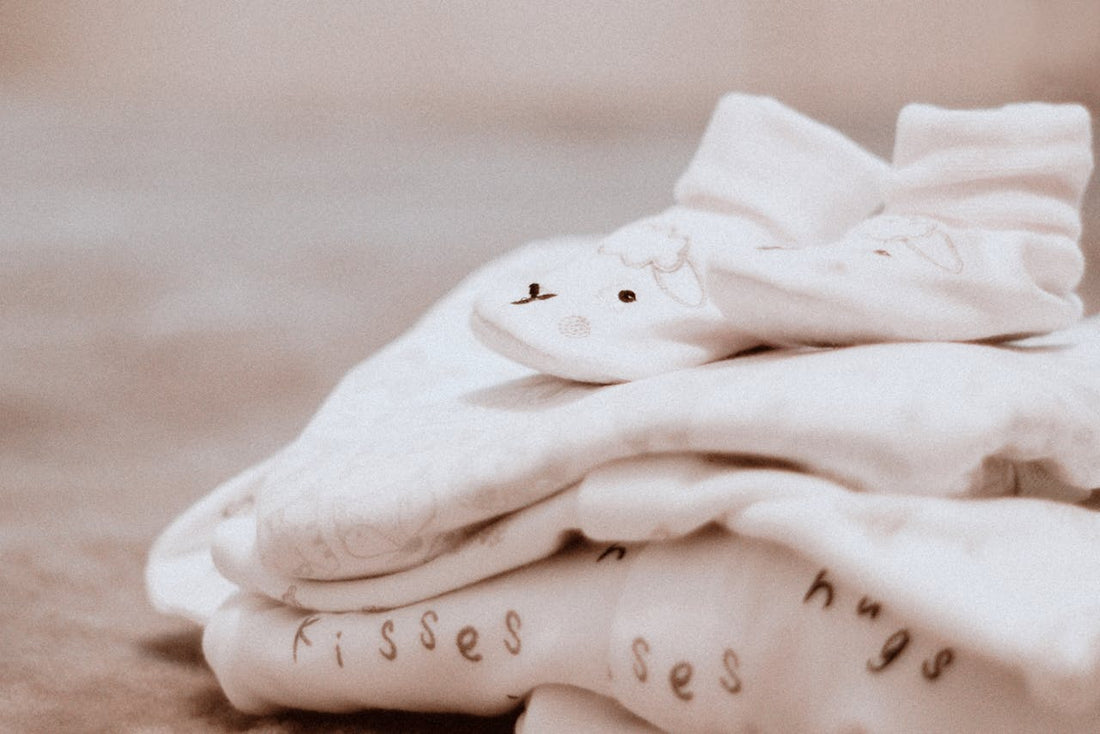Are you searching for dependable advice on baby garment care? You've landed in the perfect spot! Here at Dip, we blend our passion for sustainability with effective solutions for daily challenges.
In this article, we'll walk you through a detailed, step-by-step process on how to wash baby clothes. We understand that the correct cleaning methods not only maintain the softness and vibrant colour of those tiny outfits but also ensure that they are safe and gentle for your baby's delicate skin.
Dive into our expert guidance and learn how to keep your little one's wardrobe in pristine condition.
What this article covers:Washing Machine or Hand Wash?
Deciding between machine washing and hand washing for baby clothes often depends on the specific needs of your child's garments.
Machine washing offers convenience and efficiency, ideal for busy parents who face mountains of laundry. However, for those extra delicate items or when addressing heavy stains, hand washing can be the gentler, more controlled method.
With delicate items, such as cashmere and wool, check out our articles “how to wash cashmere” and “how to wash wool” for a more comprehensive guide on how to properly wash these items.
Regardless of your choice, it's essential to check the garment label as it provides tailored care instructions.
At Dip, we understand that each piece of clothing might require a different approach, which is why our laundry detergent sheets are the ideal companion for both methods.
These sheets are not only easily dissolvable, ensuring no residue is left on fabrics, but they are also hypoallergenic and eco-friendly, making them safe for your baby's sensitive skin and better for the planet.

How to Wash Your Baby's Clothes
As we explore the essentials of caring for your little one's wardrobe, it's crucial to understand the best practices that ensure their clothes remain clean, safe, and comfortable.
In discussing how to wash your baby's clothes, we're not just addressing the garments themselves but also providing insights that apply to household items.
So, if you're contemplating how to wash pillows or how to wash a duvet, stay tuned, you might learn a thing or two from this step-by-step process.
Always Check The Label
Each piece of baby clothing is equipped with a care label that serves as an indispensable manual for maintaining the garment's quality and safety.
These labels detail the necessary temperature settings, optimal wash cycles, and appropriate drying methods to prevent damage and ensure the items remain gentle on your baby's skin.
It is crucial to adhere to these guidelines, as they are specifically designed to protect the delicate fabrics and dyes used in baby apparel.
Wash New Clothes Before Wear
It's imperative to wash new baby clothes before their first wear. Our findings reveal that residues left from the manufacturing process, such as dyes and chemicals, could potentially irritate your baby's sensitive skin.
These residues are similar to those found on new towels and require thorough washing to ensure all harmful chemicals are removed.

Separate The Whites From Colours
Separating baby clothes into whites and colours before washing is as crucial as understanding how to wash linen.
Based on our observations, this methodical sorting prevents dye transfer from coloured garments to white ones, ensuring that the whites remain unblemished and vibrant.
This practice is particularly important for baby clothes, which often feature soft, delicate fabrics that can easily absorb dyes from other items.
By dividing the laundry in this way, we not only maintain the integrity and appearance of each garment but also enhance the overall effectiveness of the cleaning process.
Prevent Bacteria
We've discovered that washing baby clothes at 60 degrees Celsius effectively eliminates bacteria without harming the fabric.
This temperature is particularly vital for sanitising garments that are heavily soiled or have been exposed to illness, ensuring they are safe for your baby's delicate skin.
A 60-degree cycle strikes a balance between thorough cleaning and fabric preservation, making it an essential practice for maintaining the hygiene of baby wear.
Opting for this washing temperature helps in reducing the risk of skin irritations and infections, reinforcing the importance of this practice for any laundry involving baby clothes.
Opt For Air Drying
Choosing air drying for baby clothes is not only an environmentally friendly option but also a gentler alternative to mechanical drying.
Unlike tumble drying, which can be harsh and lead to fabric shrinkage or damage, air drying ensures that baby garments retain their softness and structural integrity.
When it comes to other fabrics, such as towels and weighted blankets, a similar approach should be followed. If you're wondering how to wash towels or how to wash a weighted blanket, check out our articles on both topics for an in-depth guide.
By air drying, we avoid the intense heat and mechanical action of dryers that can wear out fabric fibres over time.

Conclusion
Understanding the proper care for baby clothes is vital to maintaining both their quality and safety. Dip provides you with proven strategies to ensure that everything from baby outfits to delicate materials like cashmere and puffer jackets is handled with the utmost care.
By following our guidelines for washing, drying, and maintaining fabric integrity, you help extend the life and appearance of your child's garments.
Explore our sustainable solutions and expert advice today on our website. Embrace the change with Dip, where care meets innovation.
If you want to learn more, why not check out these articles below:
- How to Wash a Puffer Jacket
- How to Wash Trainers
- Bio vs Non Bio Detergent
- Does Detergent Kill Bacteria?
- How Much Detergent to Use?
- Does Laundry Detergent Expire?
- How to Get Bad Smells Out of Laundry
- Can I Wash Wool with Normal Detergent?
- Detergent vs Disinfectant
- Laundry Pods vs Liquid
- What Is a Neutral Detergent?
- Is Laundry Detergent Toxic?
- Soap vs Detergent
- What Happens When You Use Too Much Laundry Detergent?
- Where to Put Detergent in Washing Machine

